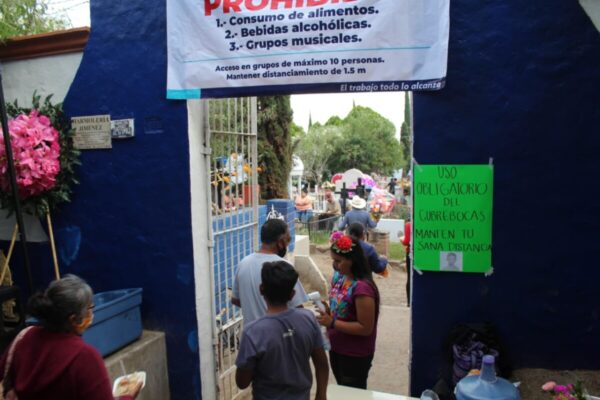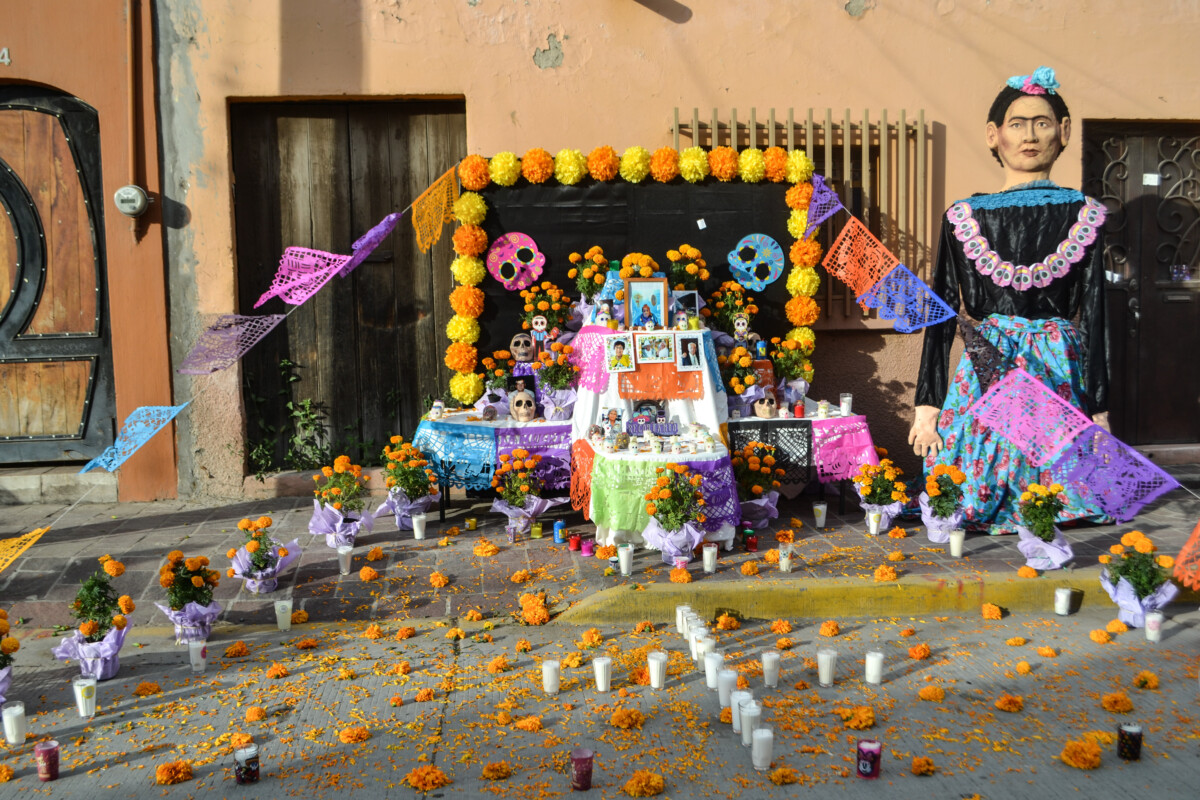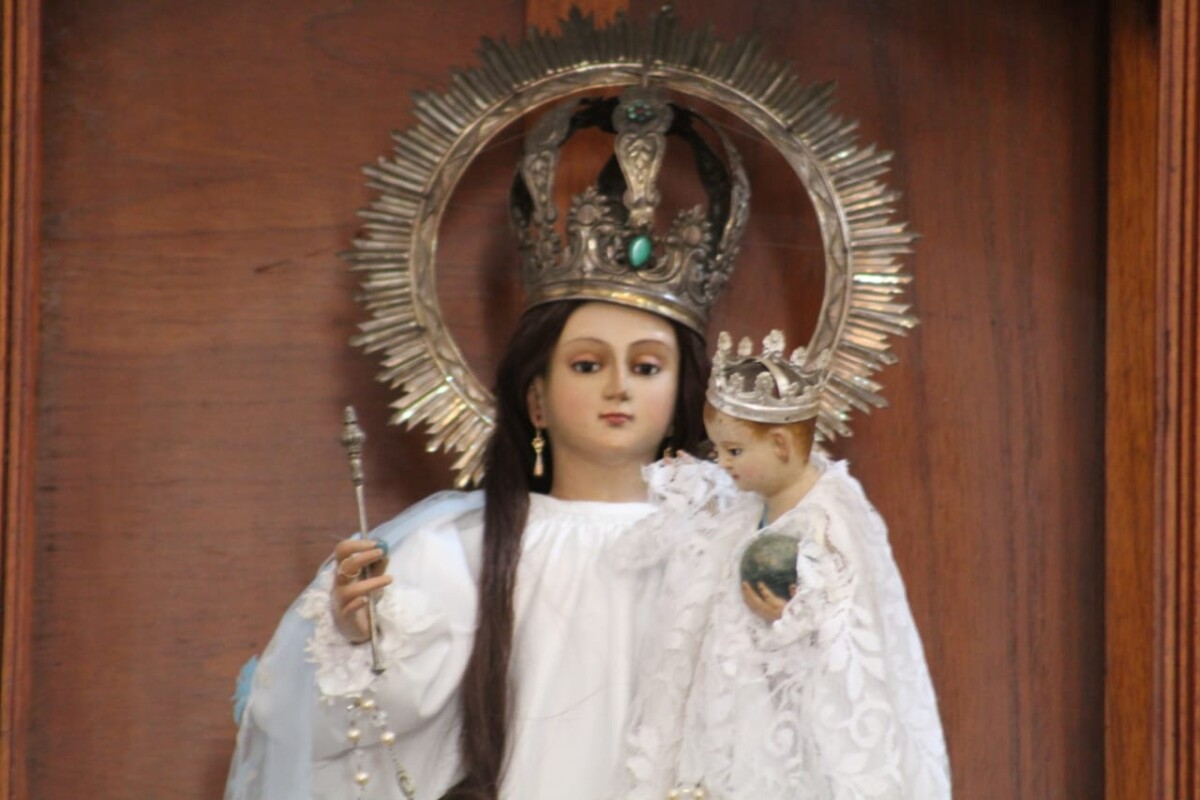Localidades
The Monumental Altar of San Juan Cosalá is intentionally set on fire
For the second year in a row, the large altar on top of the Quiosco de San Juan Cosalá was set on fire. Photo: Courtesy.
Héctor Ruiz Mejía: For the second consecutive year, the Day of the Dead monumental altar on the Kiosk of San Juan Cosalá was set on fire, although this year, unlike last year, the blaze was caused intentionally, according to Luis Guzmán coordinator of the November 1 «Paseo de las Ánimas» event.
Although the identity of the culprits is known, their names have not yet been officially released, said one of the participants of the «Paseo de las Ánimas» who preferred to remain anonymous. Furthermore, according to Luis Guzmán, the organizers were unaware of the fire that broke out in the early hours of November 2nd until the following morning.
«This is not only an offense to me and my team, but to the entire community, since it was the residents themselves who helped to decorate and make the festival a reality,» Guzmán explained, dismayed by the situation.
According to Guzmán ‘s version, all possible precautions were taken and he and his team checked everything before leaving because of their experience of the accidental fire at the last festival caused by a candle that set fire to the altar.
«I personally extinguished all the candles, I made sure that nothing was left burning and regarding the wires, we did not leave a single one, precisely wanting to avoid any kind of short circuit, we checked everything; this, sadly, was intentional,» said Luis, via telephone to Semanario Laguna.
Thus the work of the residents of San Juan Cosalá, which took approximately two weeks to cover the entire Quisco de flores de Cempasuchil, was reduced to ashes in a single night.
According to an anonymous source, the people who caused the fire are already known by the people of San Juan Cosalá themselves. Since the complaint was made unofficially, the suspects are presumed to be public servants whose motive for setting fire to the offering is also unknown.
A meeting will be held at the offices of the delegation between the organizers of the festivity, who are seeking to reveal the culprits so that the events do not happen again. The meeting is scheduled for on Friday, November 5, around 7:00 p.m.
Translated by Patrick O’Heffernan.
Celebration and color returned to the Ajijic cemetery
On November 1 and 2, the cemetery was open from 8:00 am to 8:00 pm with a Covid checkpoint at the entry.
Sofía Medeles (Ajijic, Jal.)– Unlike last year when the municipal cemetery only allowed people to enter to clean the tombstones, this year people were able to decorate the graves of their relatives who have passed away and spend some time together.
The doors of the cemetery were kept open from 8:00 a.m. to 8:00 p.m. on November 1 and 2, and strict Covid checkpoints were maintained at the entrance. Visitors were required to wear masks and many did, and sanitizing gel was provided. In addition, Civil Protection personnel were on hand to assist.
«It is a beautiful tradition that year after year we try not to lose, besides being a moment of uniting with our living and our dead. I met many people that I know here and we were happy that this year the cemetery was more accessible and we could stay longer. And we found a very clean cemetery», said one of the Ajijic residents who was at the cemetery.
Inside the cemetery, people were busy cleaning and decorating the tombs, as well as sitting and socializing among families. Every grave, even the oldest and most forgotten, had at least one flower. Outside the cemetery flowers and food were on sale.
The person in charge of the office, Maximiliano «Max» Macías Arceo, said that elements of civil protection and public security were patrolling the cemetery. He also said that there were no mishaps and that people followed the requirements and respected the hours of service.
«The cemetery was not closed as such, because the gate to the stream is missing, but at the time (of closing) people were invited to leave and there were no problems. There were no altercations or mishaps», said Maximiliano «Max» Macías.
Also, on November 2, the cemetery closed one hour later by order of the Chapala City Hall, so that the families had the opportunity to leave their graves ready and clean of the garbage they may have generated during that afternoon.
Translated by Amy Esperanto.
Day of the Dead festival goes on in Jocotepec despite attempts to close it
Altar accompanied by the iconic Frida Khalo. Photo: Héctor Ruíz.
Héctor Ruíz Mejía – Despite municipal authorities nearly closing the festival «Al fin, para morir nacimos» («In the end, we were born to die»), the event for the Day of the Dead was held in Jocotepec, moving some local residents to tears.
According to Carlos Cuevas, ex former director of Casa de la Cultura José Vaca Flores, who was one of the organizers of the event, the new director of the highway system, Aguirre (who had not even been sworn in yet), tried to close the event, arguing that the appropriate permits had not been requested.
Cuevas explained that the road personnel argued that they lacked the Civil Protection review and that according to him, «it was in their power to cancel the permit if they wished.» However, Civil Protection rose to the call to provide support to the event so the event could proceed.
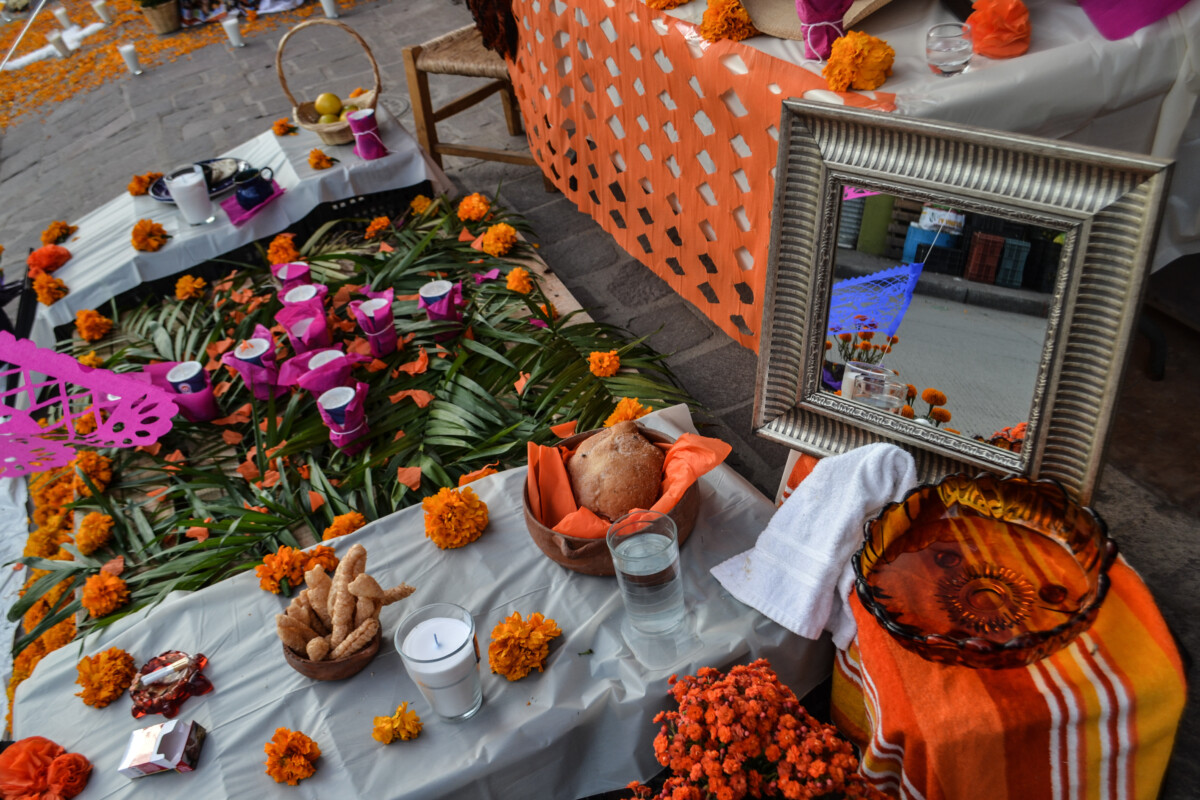
Sample of one of the altars on Morelos Poniente street. Photo: Héctor Ruiz.
The first edition of the festival took place last Sunday, October 31 on Morelos Poniente Street, where in addition to enjoying typical music and spectacular performances by students from the School of Performing Arts of the University of Guadalajara (UdeG), dozens of people witnessed the stories on the 11 altars that the community itself erected along the street.
One of the altars was made by the Ibarra Campos family to honor their father, Goyo. He was described as a cheerful man, a cab driver, who enjoyed life, as well as atole and chicken. These stories brought the audience into the stories themselves of those who lived before them.
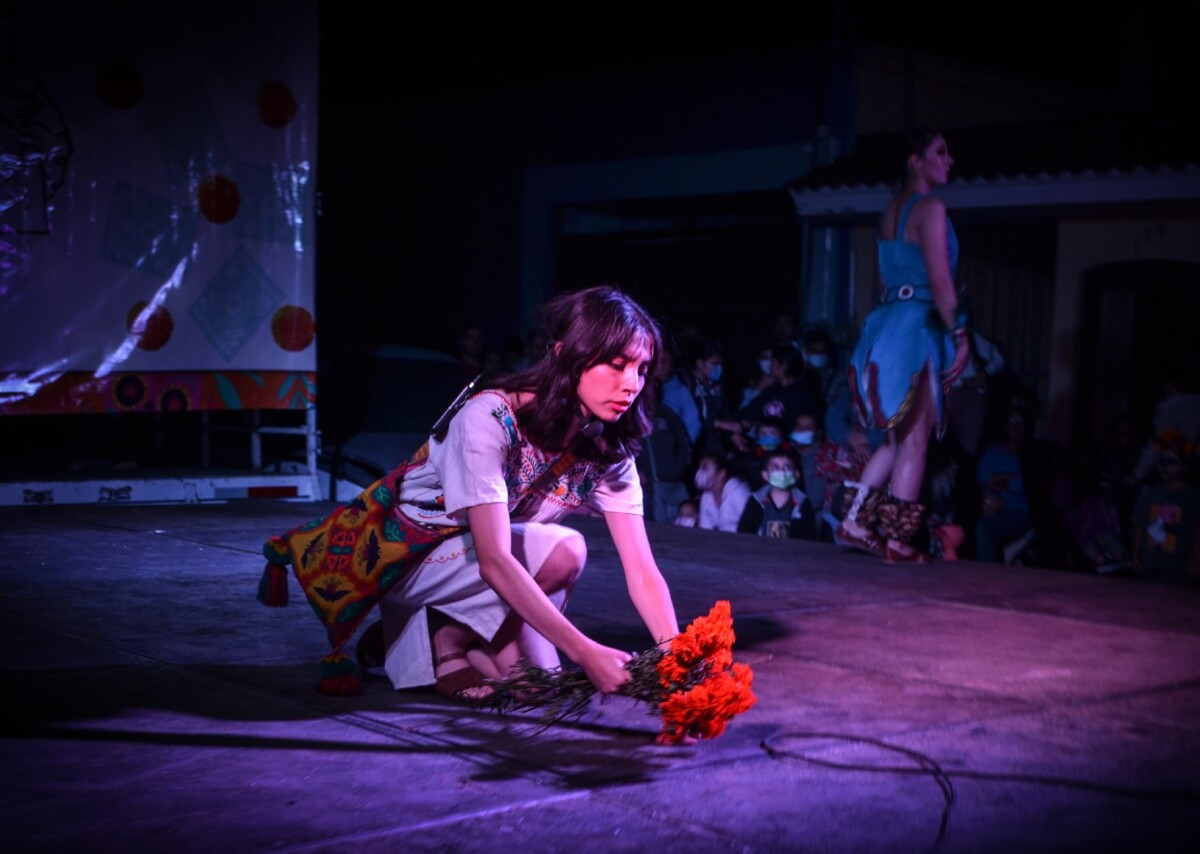
Sample of one of the altars on Morelos Poniente street. Photo: Héctor Ruiz.
«Because we are not only united in death, but also in life,» Carlos said, adding that everyone contributed a little or a lot, like the ladies of the neighborhood, who for two weeks set up the two portals covered with marigold flowers located at both ends of the street.
«It was incredible to see how all the people came together to make the event, from people who supported with 20 pesos, to those who anonymously supported with up to ten thousand pesos,» explained Carlos.

Sample of one of the altars on Morelos Poniente street. Photo: Héctor Ruiz.
«The truth is I didn’t know what to expect, I was in the plaza and I started to hear that they were coming here, so I came to see what was going on and I really had a good time», commented Ramón. He said that he couldn’t stop laughing from the Chiapas death jokes in one of the plays.
The first edition of the festival in commemoration of the Day of the Dead was packed with a large turnout which exceeded all the expectations of the organizers and the community which longed to celebrate this date after a year of inactivity.
Translated by Kerry Watson.
Altar display returns to 5 de Mayo Street in Chapala as its founder seeks to bring back its splendour
This is the completed altar presented by the neighbours of Calle 5 de Mayo. Jazmín Stengel.
Jazmín Stengel – After retiring from the organization in 2016, the founder of the traditional altar display, Cristina Flores, has returned to take the reins of the organizing committee. The annual exhibition of altars for the Day of the Dead on 2 November was once again held on 5 de Mayo Street in the municipal capital of Chapala.
Despite the low participation in the last two years due to Covid-19 health emergency measures, 20 families responded to Cristina’s invitation this year, but only 16 altars were set up in total. With candles, food, music, and depictions of the people, many of whom died during the pandemic.
In the exhibition’s best years, up to 130 altars were set up along the street, including altars from the parish of San Francisco de Asís and institutions such as schools, the Red Cross, DIF Chapala and the Chapala Regional High School, who regularly compete in the Vida y Muerte festival.
Although Civil Protection only estimated around 150 spectators between 8:30 and 10:00 p.m., the altar display (and contest by the high school) became known as the largest in Jalisco, according to the State Government, both in terms of the number of altars and visitors, gathering more than five thousand people at a time. «And it will be the same again,» said Mrs. Flores, who said she has already begun to extend invitations to different institutions for next year.
The 16 altars that were presented were the same for the last two years, altars that neighbours from the block set up in their backyards, garages or on the pavement outside their homes and that have kept the tradition alive despite health restrictions. This year was no exception and, although with more dark spaces than light, the few neighbours who participated continued to offer tea, canelita and sandwiches to the few spectators.
Professor David Castellanos of the Chapala Regional High School, who is in charge of organizing the celebrations on these dates, said that he is keeping alive the hope of presenting the Vida y Muerte contest again, along with the display of altars on 5 de Mayo Street.
Translated by Dee Lynn
Efrén González will create a second Wall of the Dead
Efrén González before the lighting of the Wall of the Dead. Photo: Sofía Medeles.
Sofía Medeles (Ajijic, Jal.)- Painter Efrén González announced her would create a second Wall of he Dead just before he lit the candles of the 1,600 skulls that make up his current installation on one of the walls of the Marcos Castellanos school.
The «new wall of the dead» will be located in La Ladrillera, near his home, to the west of Ajijic, Efrén informed the hundreds of attendees who came to view the lighting of the candles at the November 2nd event, along with other presentations.
Efrén explained that he was given the authorization to make a similar, but smaller wall on the outskirts of Ajijic made up of 800 clay skulls.

«I will turn first to my neighbors, because they are the ones who deserve the space first, then all the people of Ajijic, or who have had something to do with Ajijic,» said Efrén at the event, explaining how he will dedicate the skulls.
He concluded by stating that he will not charge for putting the names of those who want to be on the new wall, however, it is very difficult for him to do so, so he asked them to be generous in supporting the project.
Translated by Patrick O’Heffernan.
Otra vez se quemó el Monumental Altar de San Juan Cosalá
Por segundo año consecutivo se incendió el gran altar apostado sobre el kiosco de San Juan Cosalá. Foto: Cortesía.
Héctor Ruiz Mejía.- Por segundo año consecutivo se incendió el altar monumental del Día de Muertos realizado sobre la estructura del kiosco de San Juan Cosalá; sin embargo, este año, a diferencia del pasado, hay quien asegura que el percance fue ocasionado de manera intencional, caso de Luis Guzmán, coordinador del evento “Paseo de las Ánimas”, realizado el primero de noviembre.
El incendio que se suscitó durante la madrugada del 2 de noviembre, no fue del conocimiento de los organizadores hasta la mañana siguiente, a decir de Luis Guzmán.
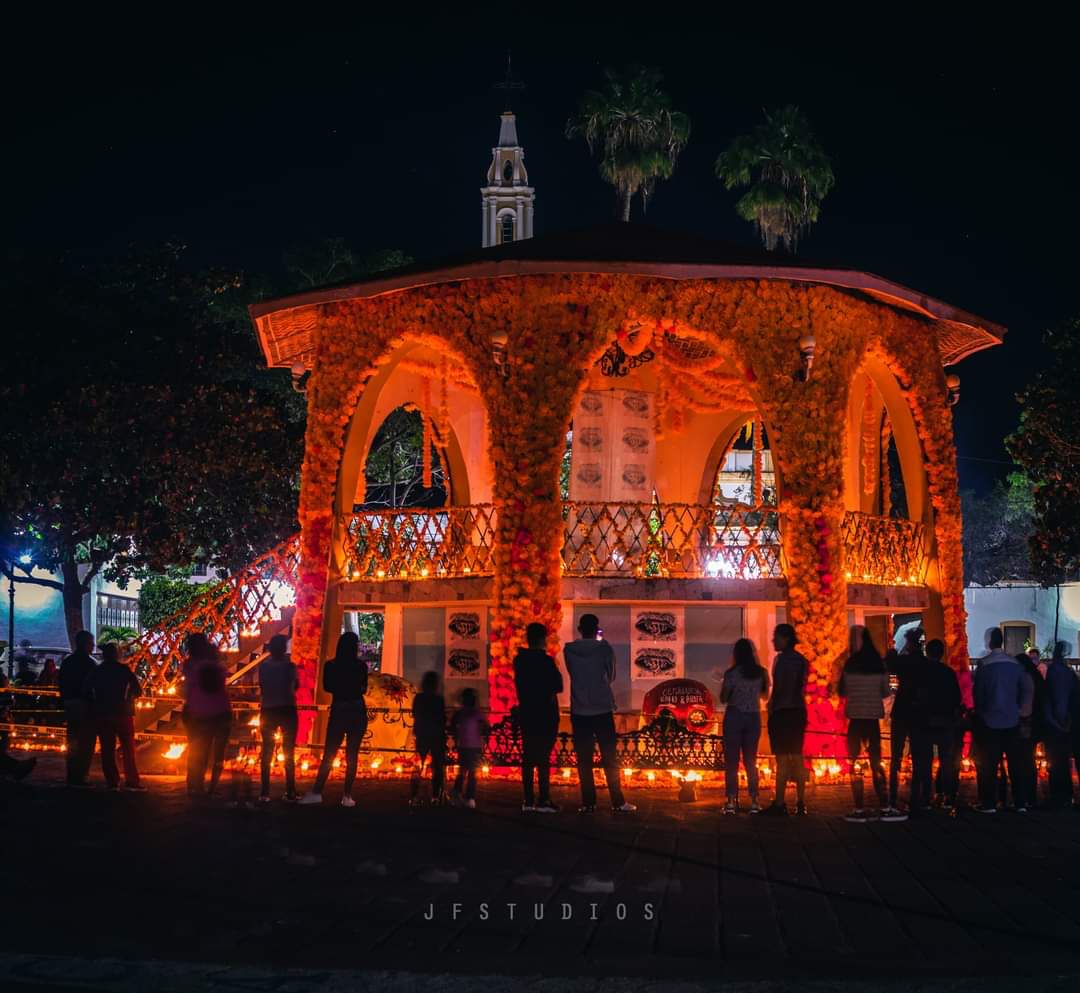
Así lucía el kiosco de San Juan Cosalá antes de ser incendiado intencionalmente. Foto: JF STUDIOS
“Esto no es sólo una ofensa para mí o para mi equipo, sino para toda la comunidad, pues fueron los propios habitantes quienes ayudaron a decorar, a que el festival fuera una realidad”, explicó el entrevistado que estaba consternado respecto a la situación.
De acuerdo a la versión de Luis, el incendio fue ocasionado tras la experiencia que dejó el incendio accidental del festival pasado por una veladora que le prendió fuego al altar; por lo que este año se tomaron todas la precauciones posibles, y él junto con su equipo revisaron todo antes de irse.
“Yo personalmente apagué todas las veladoras, me cerciore que no quedara nada prendido y respecto a los cables, no dejamos ni uno solo, precisamente queriendo evitar algún tipo de corto circuito, revisamos todo; esto, tristemente fue intencional”, aseguró Luis, vía telefónica.
Así, con la resignación y la molestia de la comunidad, el trabajo de los habitantes de San Juan Cosalá que tomó aproximadamente dos semanas cubrir todo el kiosco de flores de Cempasúchil se redujo a cenizas en una sola noche.
Rosarios y mañanitas a la Virgen del Rosario, tradición que poco a poco se va apagando
Virgen del Rosario, actualmente se encuentra en la Parroquia de San Andrés Apóstol.
Sofía Medeles (Ajijic, Jal.)- Una tradición de aproximadamente 50 años, que se va apagando poco a poco, pese a la fe que se le tiene a la Virgen del Rosario, son las mañanitas y los rosarios matutinos, debido a la falta de participación de gente de los distintos barrios de Ajijic.
Y es que, de los seis barrios de Ajijic –San José, San Miguel, San Sebastián, San Gaspar, Santo Santiago y el Barrio de Guadalupe- este año, solo hubo dos organizadoras de las mañanitas en todo el pueblo; en San Miguel, Esther Márquez, y en San Gaspar, María Castellanos, junto a la señora Josefina “Pina” Gutiérrez, quien es encargada de la Virgen del Rosario.
Las tres coincidieron en que la tradición poco a poco se va perdiendo, esto acentuado con la llegada de la pandemia, que no ha podido dejar que se celebra con normalidad, además, el poco interés por parte de las nuevas generaciones, tanto para asistir como para involucrarse en la organización; pidiendo las tres organizadoras, a que la gente joven se anime a participar.
“Antes jalábamos aunque sea a las jovencitas con la congregación, que se encargaban de cargarla y arreglarla. Hay muchos factores, por ejemplo, la pérdida de valores y la pérdida de la fe católica; definitivamente ha habido poca respuesta”, aseguró María, quien es ayudada por su barrio para la recaudación de fondos y a los demás organizadores: Carmen Casillas, Angelica Velázquez, Socorro Blas, Marta Velázquez, Antonia Higuera (QDEP) y su hijo Alonso Higuera.
Además, la prohibición y moderación de tradiciones, por ejemplo, el lanzamiento de cohetes en las esquinas para llamar a la gente a los rosarios matutinos orilló a la gente a dejar de asistir. “Los coordinadores están fallando; por ejemplo, de 50 personas que se llegaron a juntar alguna vez, solo quedan 14, a lo mucho 18, es una tristeza”, comentó Esther.
Doña Pina, quien se ha encargado desde hace 17 años, comenta que es una experiencia inigualable estar tan de cerca con la Virgen del Rosario. “Es una hermosura estar con ella, no se deja vestir por cualquiera, se le tiene que pedir permiso y rezar su rosario, sino el vestido no le entra bien”, compartió y agregó que buscó a dos jóvenes, las cuales están entusiasmadas por encargarse de la Virgen, durante sus rosarios de octubre y los de mayo.
“Ya no hay coordinadoras, buscamos jóvenes que se quieran hacer cargo de esta tradición. La Virgen del Rosario es muy milagrosa, no permitiremos que su fiesta acabe”.
El dato:
Según el conservador, restaurador e historiador, además del actual coordinador de patrimonio cultural del Ayuntamiento de Chapala, Antonio Velazco, compartió que la Virgen del Rosario es una imagen que probablemente proviene del siglo XVIII (18), su veneración fue promovida y administrada por una cofradía hasta el siglo XX (20).
La capilla fue originalmente dedicada a la Inmaculada Concepción, por ser producto de una fundación franciscana. Es una talla de madera en tamaño menor al natural, en su brazo izquierdo sostiene al Niño Jesús, mientras que en el otro, un rosario.
Además, en uno de sus libros compartió que el festejo data de los años 70 ‘s, donde se hacía la fiesta el 7 de octubre; y sin mencionar fecha, posteriormente el festejo se cambió a todo el mes de octubre, del cual conocemos los rosarios y las mañanitas matutinas.
Regresa la algarabía en Ajijic por el festejo del Día de Muertos
Programa del festival Día de Muertos 2021 en Ajijic, que se llevará a cabo el próximo 2 de noviembre.
Sofía Medeles / Domingo M. Flores (Ajijic, Jal.)- Con un desfile de catrines y catrinas, exhibición de altares y catrinas en la plaza principal, aunado a presentaciones artísticas en la explanada del Centro Cultural Ajijic (CCA) y encendido de velas en el Muro de los Muertos, es como el Pueblo Mágico de Ajijiic, pretende celebrar a los difuntos el 2 de noviembre, luego de que por un año las actividades se vieran suspendidas por la pandemia.
El desfile de Día de Muertos estará organizado por el plantel del Centro de Estudios Tecnológicos en Aguas Continentales (CETAC) Ajijic, y saldrá a las 6:00 pm del plantel, ubicado a un costado del Auditorio de la Ribera, para finalizar en la plaza principal, donde el alumnado venderá antojitos mexicanos a beneficio de la reparación de infraestructura y equipamiento del plantel.
Durante la mayor parte del día del 2 de noviembre se podrá apreciar la exhibición de altares en la plaza principal, además de que a partir de las 7:00 de la tarde en el CCA se realizarán presentaciones artísticas.
El recién nombrado director de cultura de Ajijic, Santiago Baeza, aseveró que se retomará la costumbre de que las familias o instituciones “adopten” una catrina para colocarla en la plaza principal. Los grupos que decidan decorar su catrina recibirán un apoyo de 600 pesos.
Por su parte, el director del CCA, Efrén González, comentó que a las 8:00 de la noche se hará el encendido de velas en el llamado “Muro de los Muertos”, frente a la parroquia de San Andrés Apóstol, en uno de los muros de la escuela Marcos Castellanos.
El encargado de despacho de Ajijic, Maximiliano “Max” Macías Arceo, comentó que la invitación al festival es abierta a la población siempre y cuando respeten las normas sanitarias como el uso de cubrebocas.
Para finalizar, Macías Arceo aclaró que los panteones se mantendrán abiertos de forma regular como en años anteriores. Desmintió el rumor de que se pretendía cerrarlos para el 2 de noviembre. Por el contrario, el entrevistado señala que ya están listos para ir a darle “su manita de gato” al cementerio.
Two arrested for domestic violence in Chapala
Image for illustrative purposes
Redaction. – Personnel from the State Prosecutor’s Office executed arrest warrants against two individuals who were wanted for their probable participation in the crimes of domestic violence and criminal assault.
One of the arrested is Ángel de Jesús «N», who had a warrant pending against him was arrested in the streets of the Las Redes neighborhood of Chapala. 
In another action, Mauricio «N» was arrested. He had a valid process against him and was captured in the streets of the town of Atotonilquillo,in the municipality of Chapala.
Both detainees were handed over to the Control and Oral Trial Court of the Fifth Judicial District based in Chapala, to be prosecuted for the crimes of domestic violence and criminal assault.
Ed. Note: To protect the privacy of those not yet convicted of a crime, only first names are disclosed, with “N” in place of the last name.
Translated by: Kerry Watson
Dan a conocer a los encargados de despacho de las delegaciones de Chapala
Delegación San Antonio T.
Arturo Ortega (Chapala, Jal).- Al igual que los directivos de diferentes las diferentes áreas, el Ayuntamiento dio a conocer los nombres de las personas que se desempeñarán como encargados de despacho al frente de las delegaciones para cuyo cargo solo se escogieron perfiles masculinos.
Los cargos serán provisionales hasta que se abra la elección para quienes ocuparán el cargo de delegado de manera definitiva, aunque el alcalde, Alejandro de Jesús Aguirre Curiel aún no tiene definido en qué fecha sería la elección para este cargo.
Para ello, Aguirre Curiel dijo que, ante la pandemia todo sería cuestión de tiempo para ver la posibilidad de realizar de manera abierta una elección y en tanto serán los siguientes nombres quienes estén al frente de las cinco delegaciones.
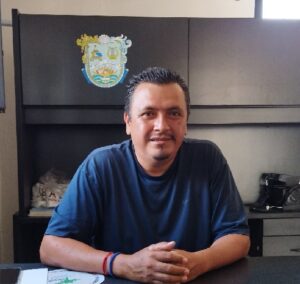
En primer lugar y como ya se había dado a conocer por Semanario Laguna se encuentra el encargado de despacho del Pueblo Mágico de Ajijic, Máximo (Max) Macías Arceo quien se ha desempeñado como comerciante.

En Santa Cruz De la Soledad, el encargado de despacho es Marcelo Raygoza Martínez, quien con anterioridad se ha caracterizado entre el sector joven de la población y por participar en las tradiciones de su delegación.

Encargado de despacho de Atotonilquillo, Antonio Pérez González es una persona carismática de su comunidad que se distingue por buscar servicios de calidad para una de las delegaciones considerada como de las más olvidadas del municipio.

El encargado de Despacho de San Antonio Tlayacapan, Gustavo Aguayo, se ha desempeñado en el negocio gráfico y de impresos en su comunidad.

El encargado de despacho de San Nicolás de Ibarra, Salvador Delgadillo Márquez ha destacado por querer servir y mejorar las condiciones de vida de los habitantes de su comunidad. El contendió para ocupar el cargo de delegado de la administración 2018-2021.
© 2016. Todos los derechos reservados. Semanario de la Ribera de Chapala

